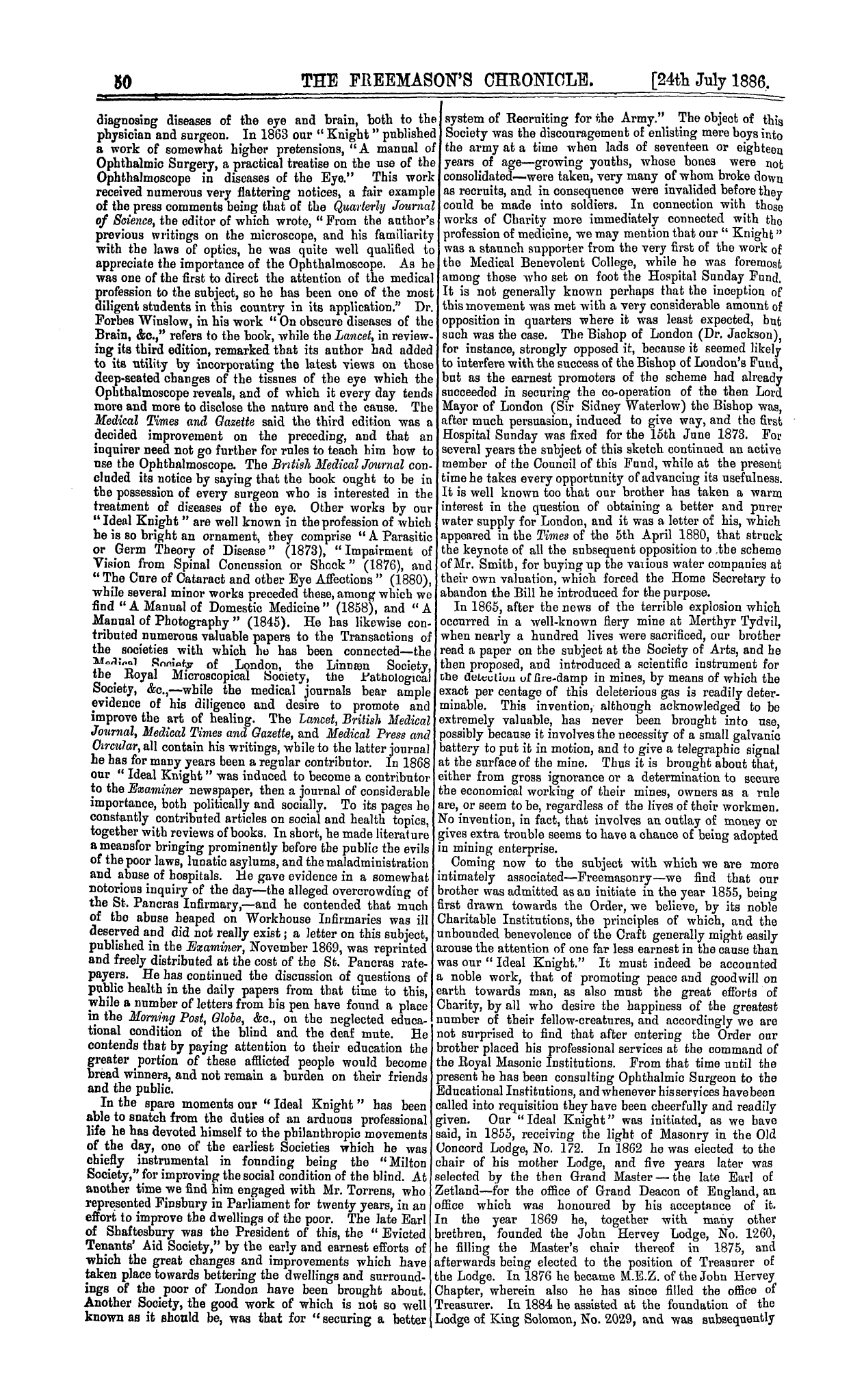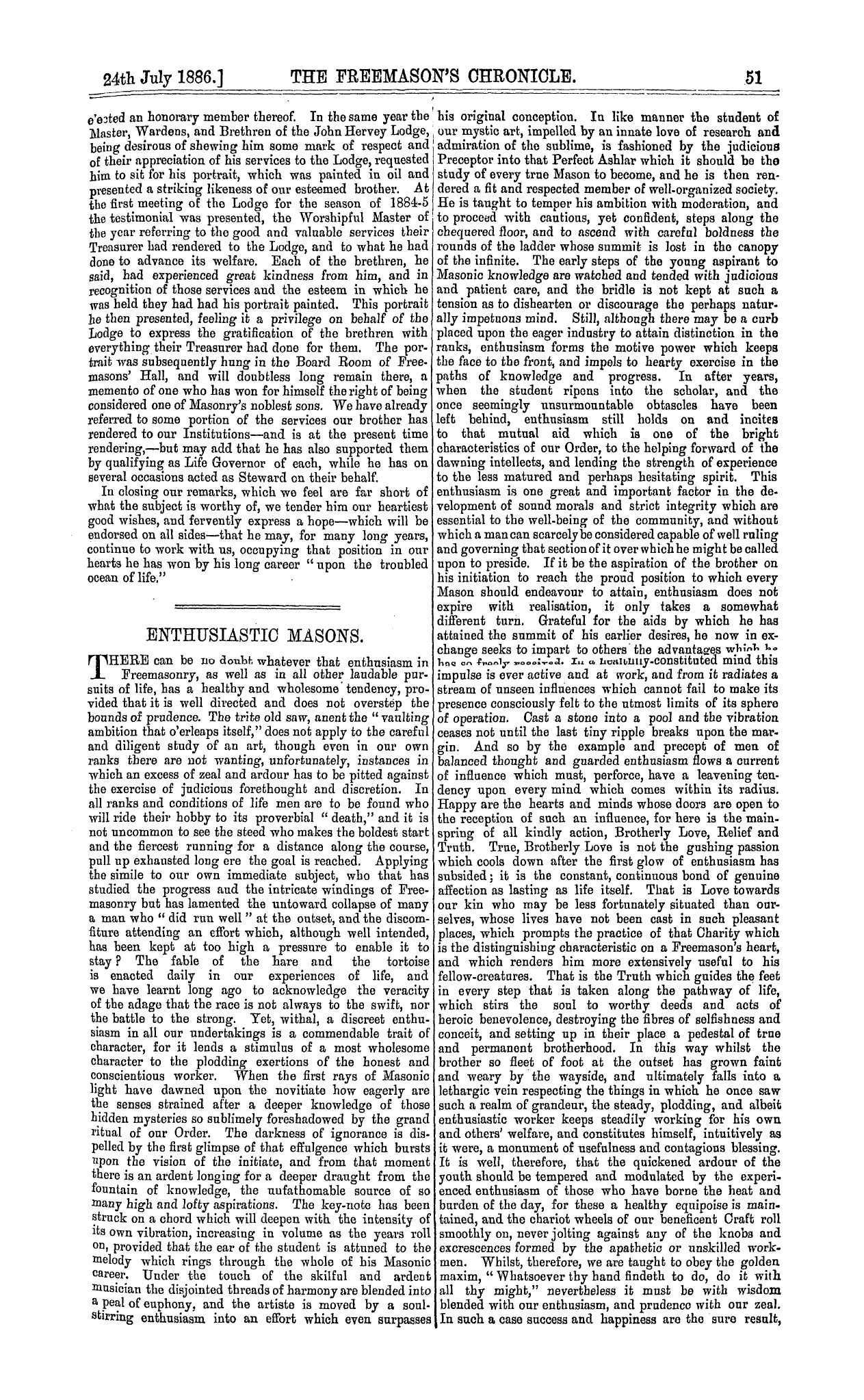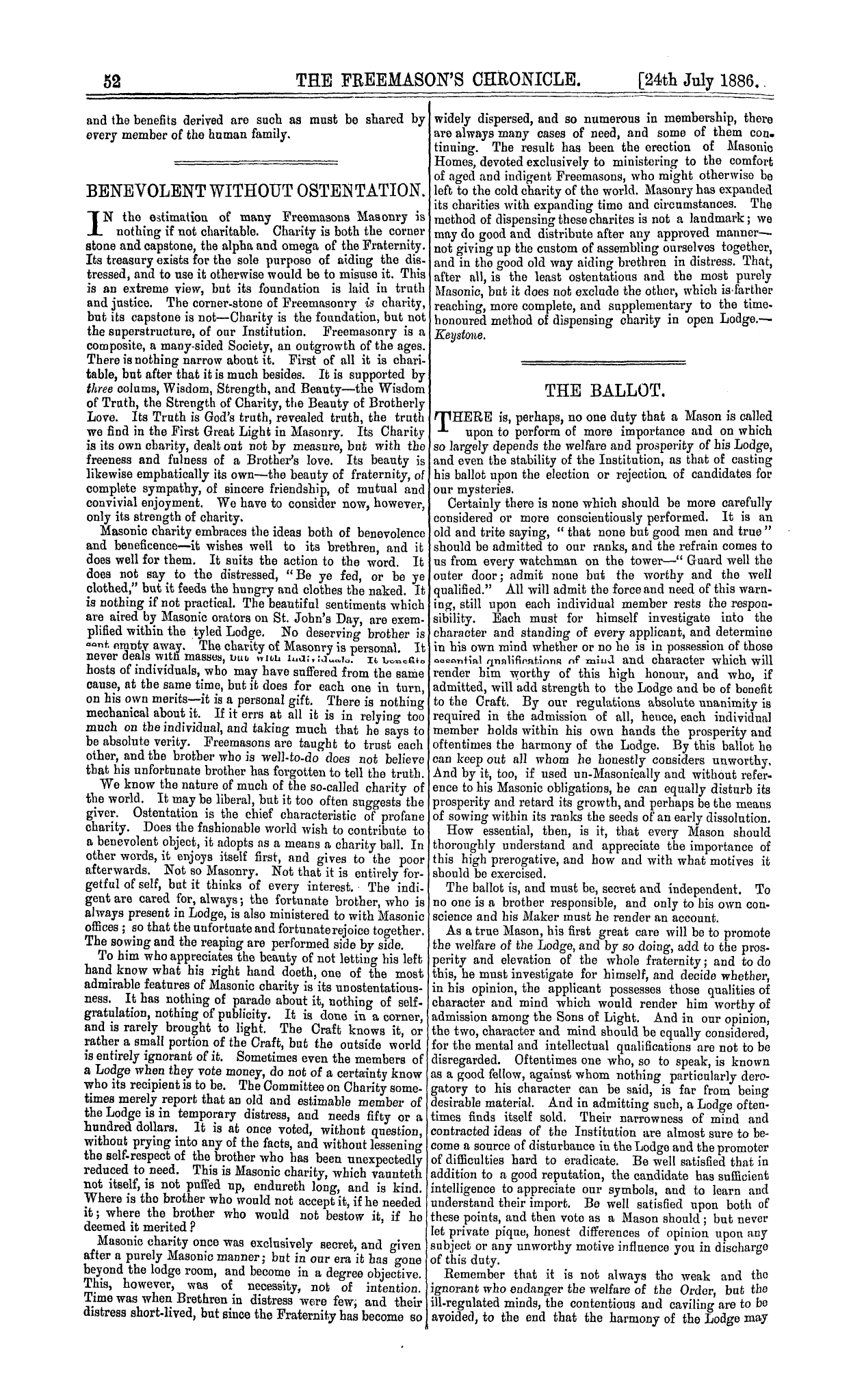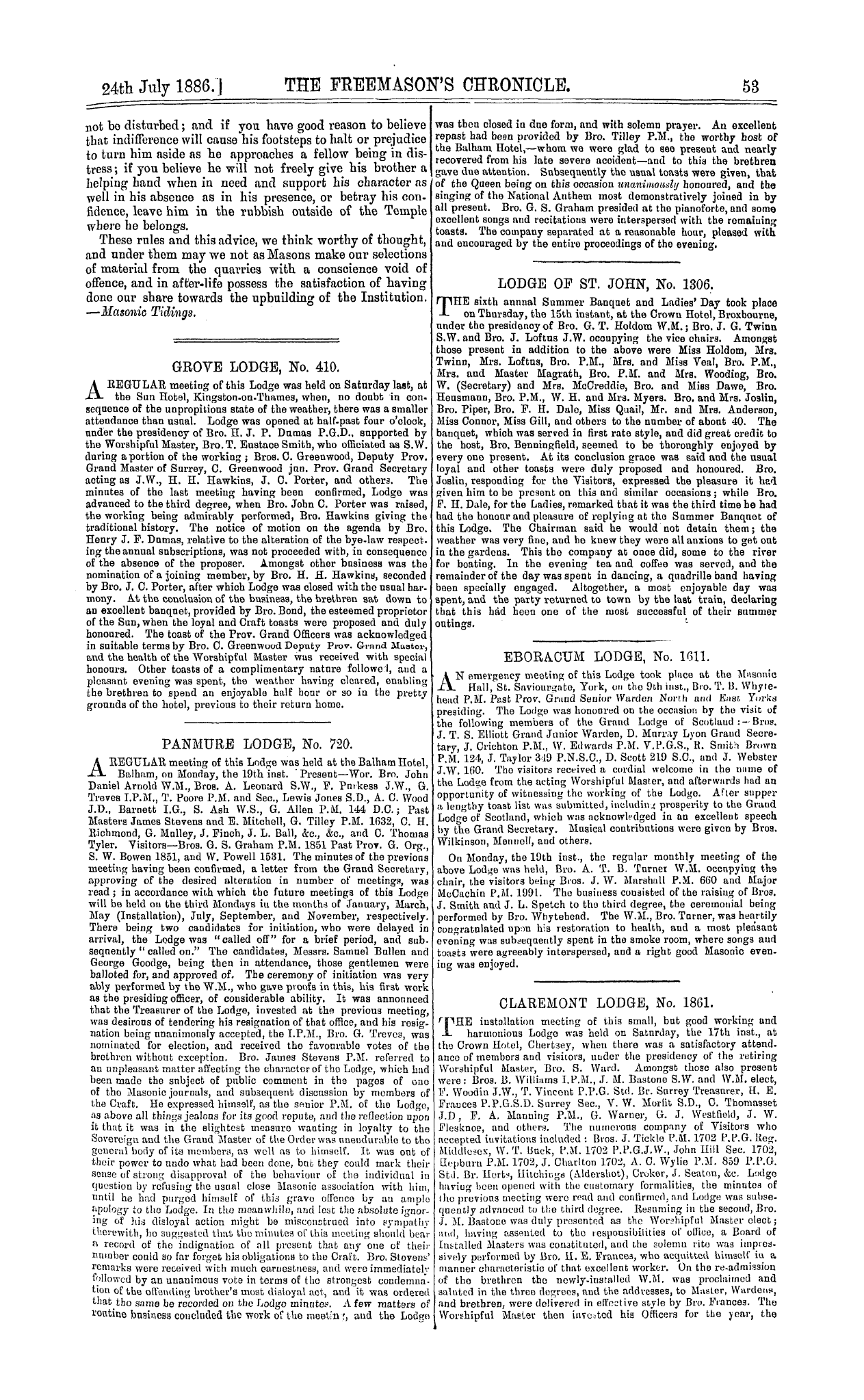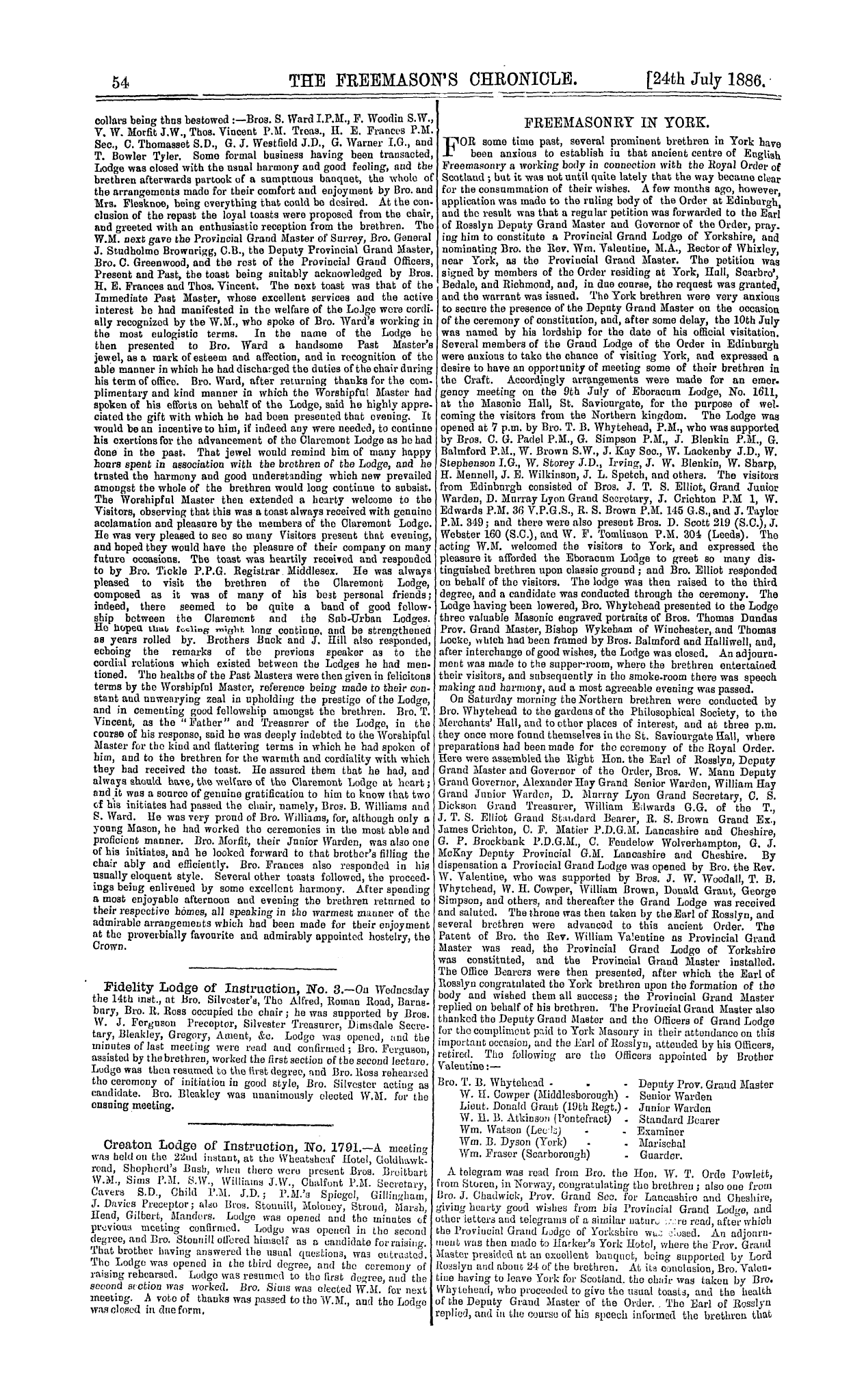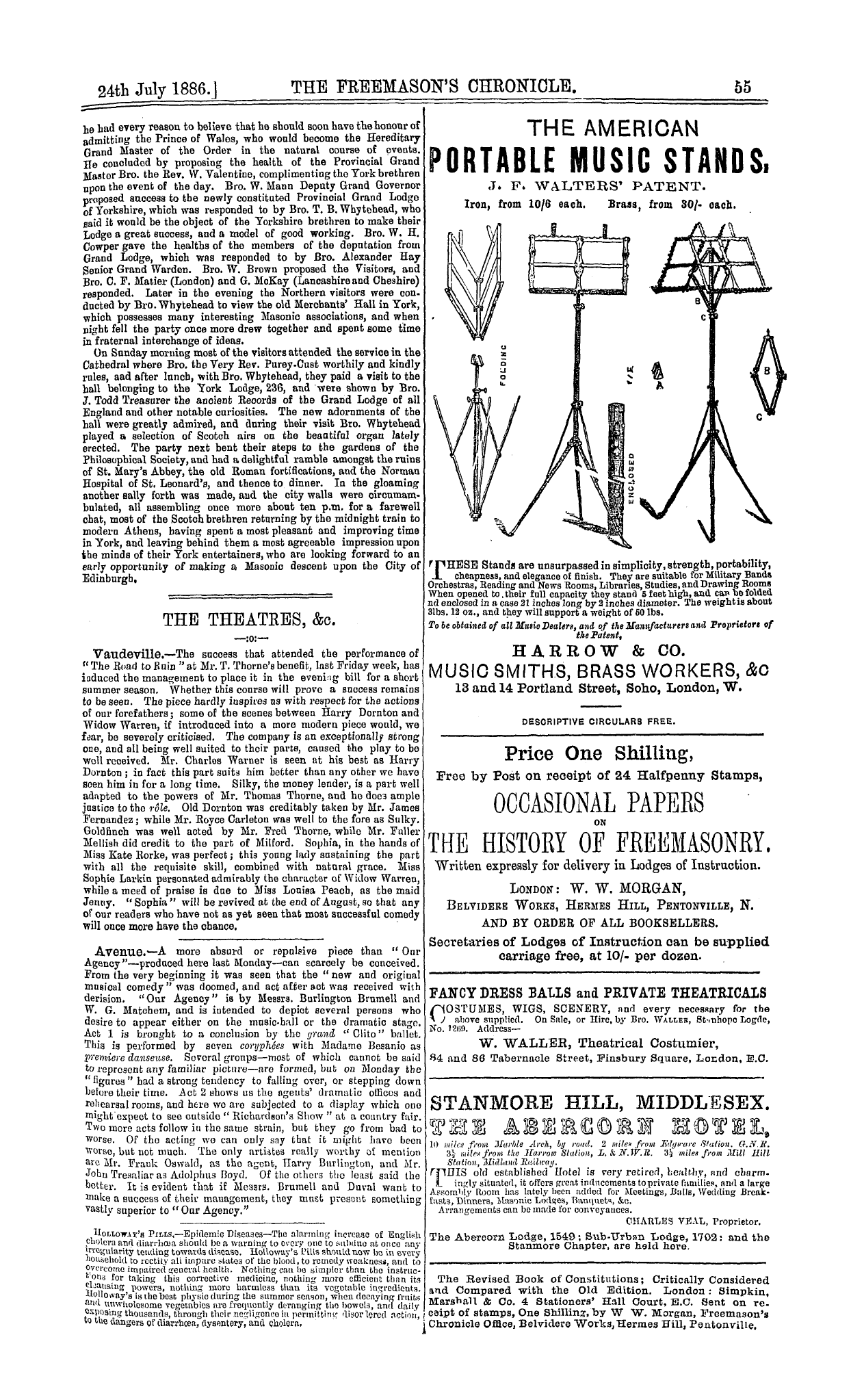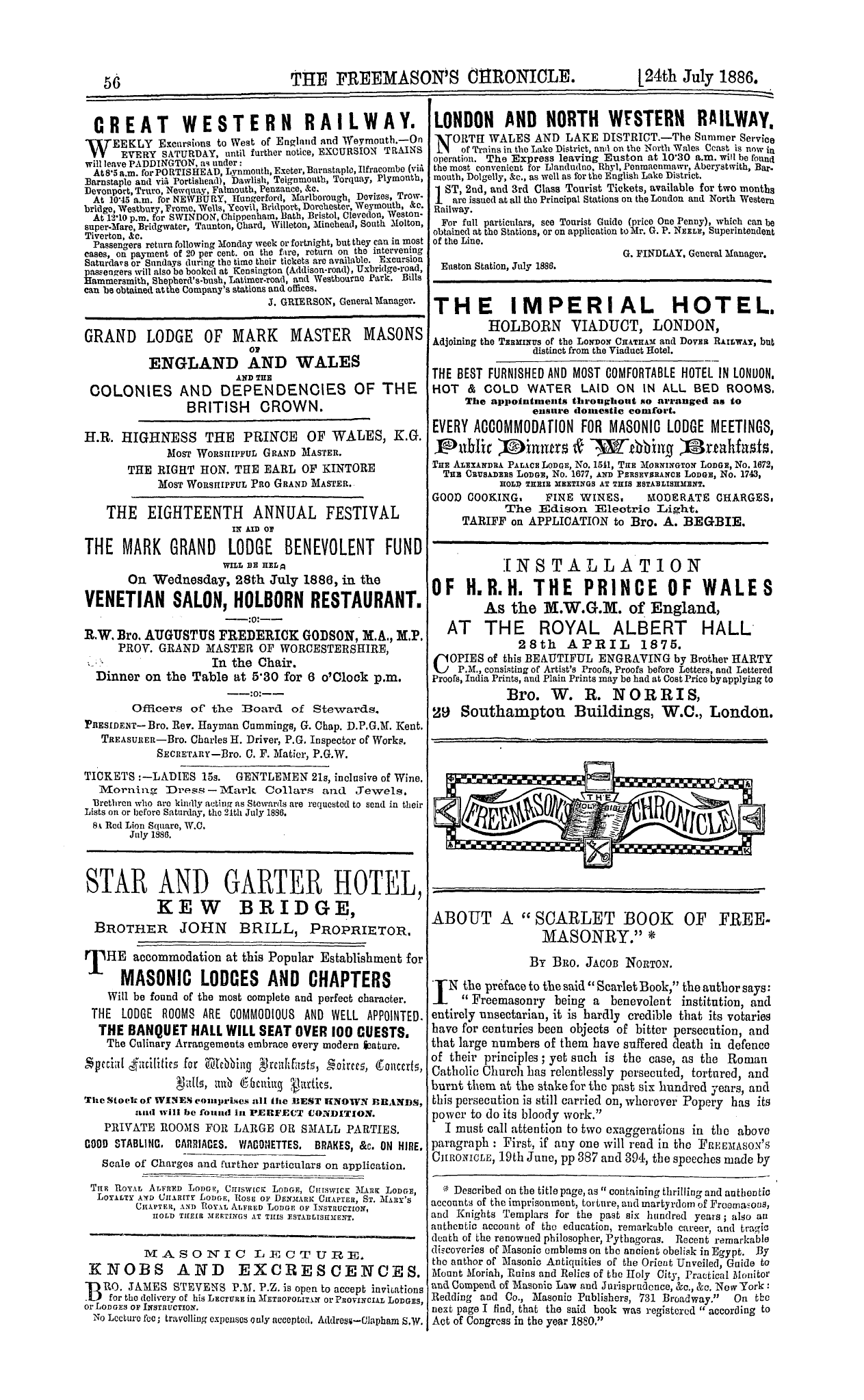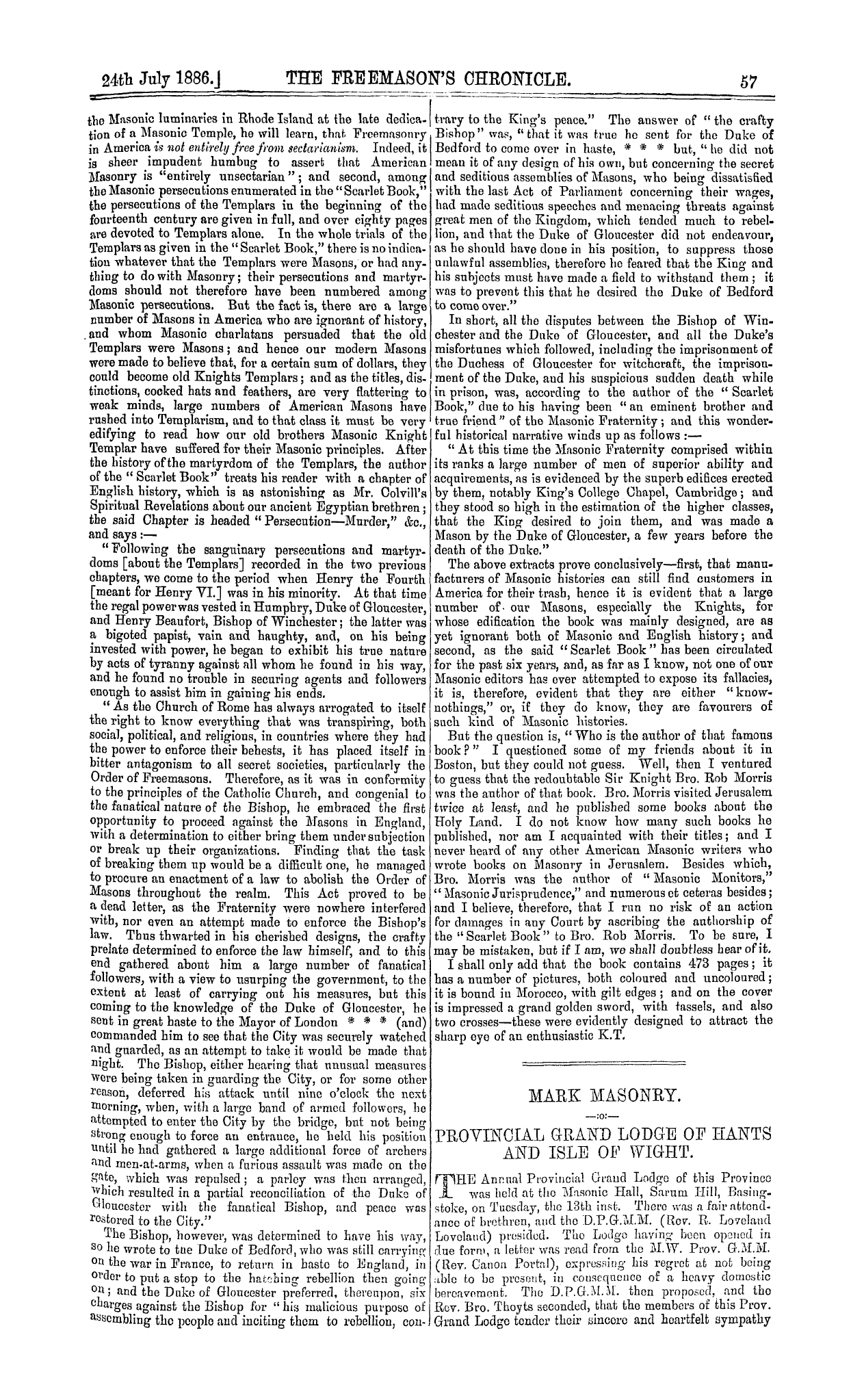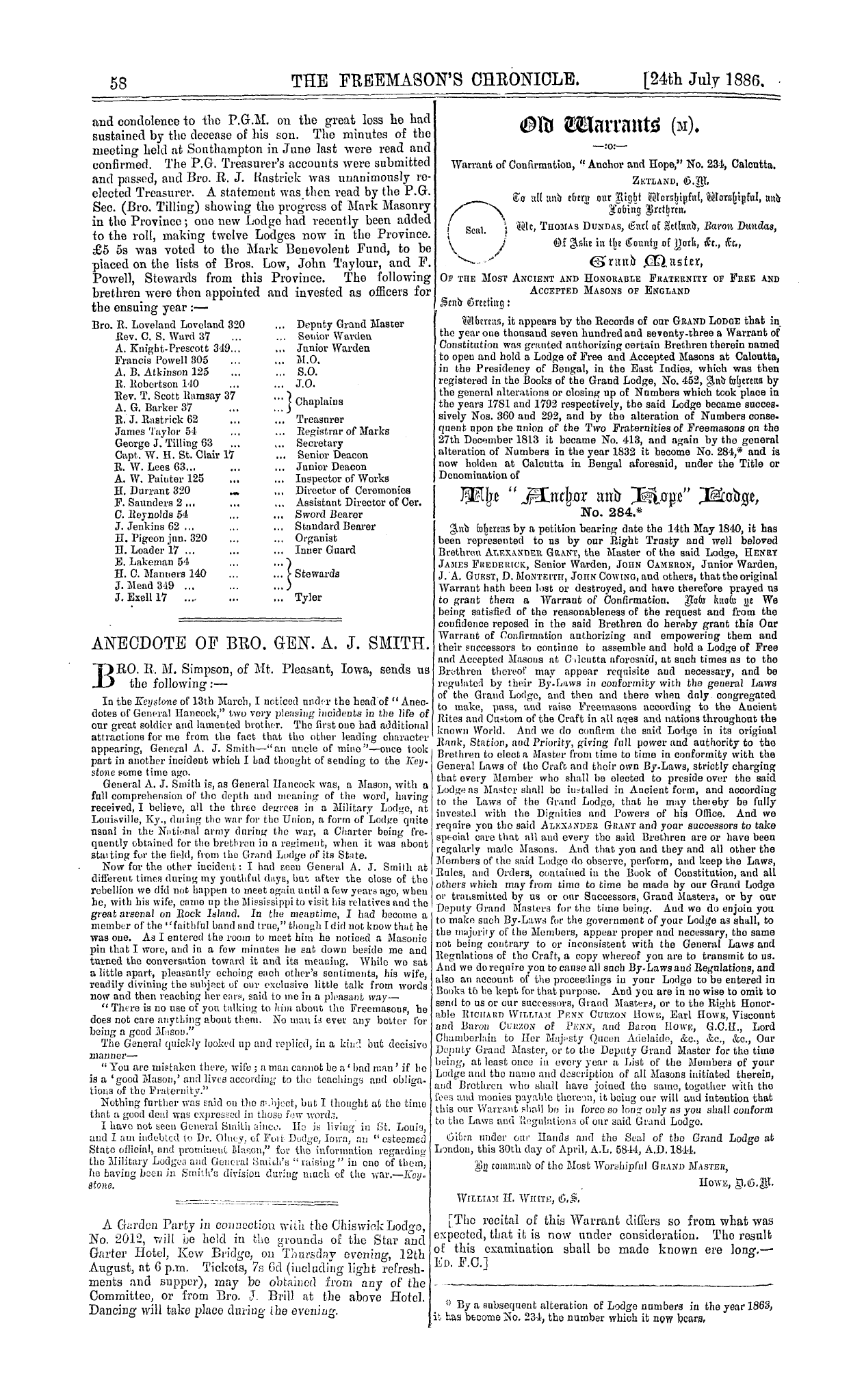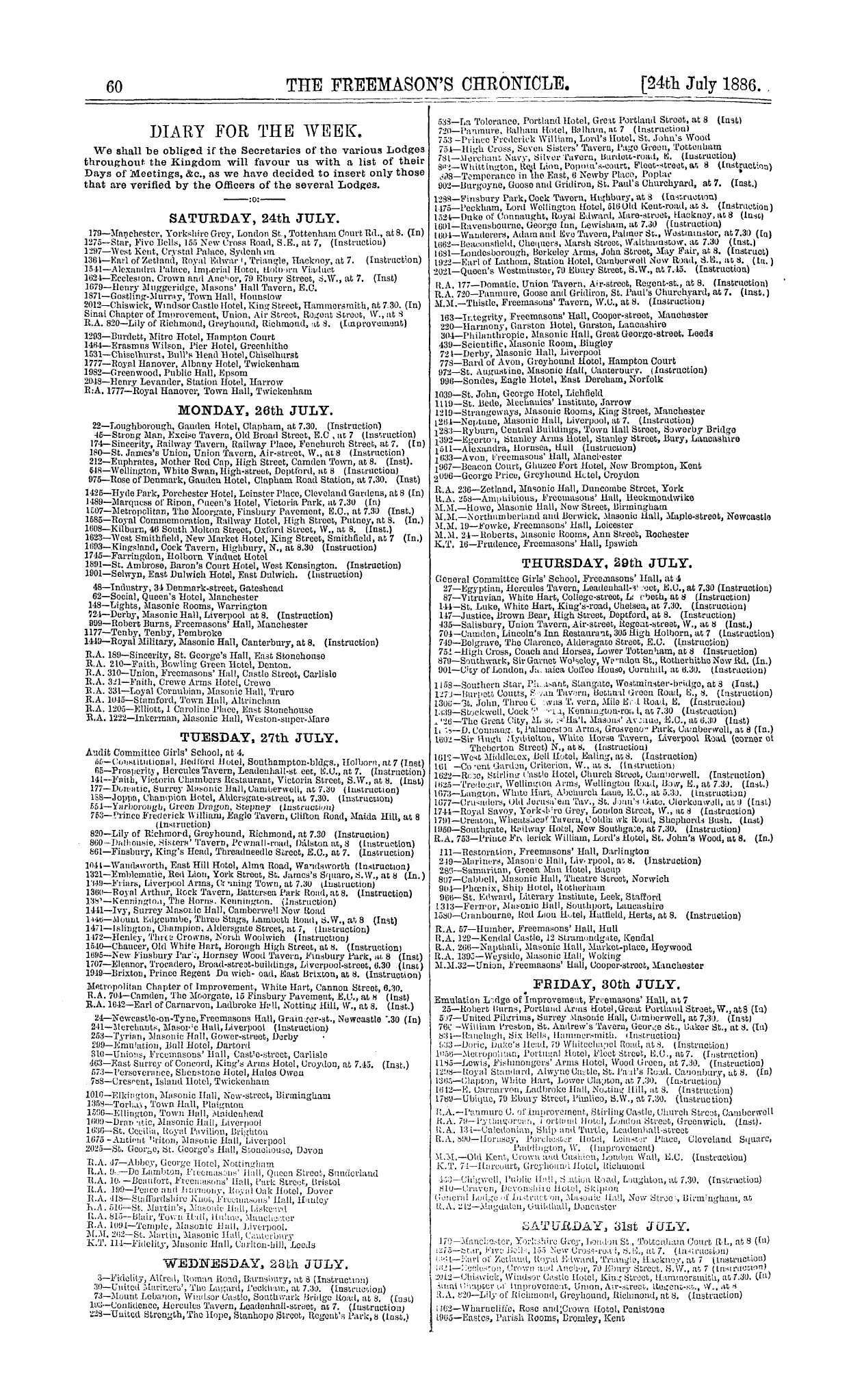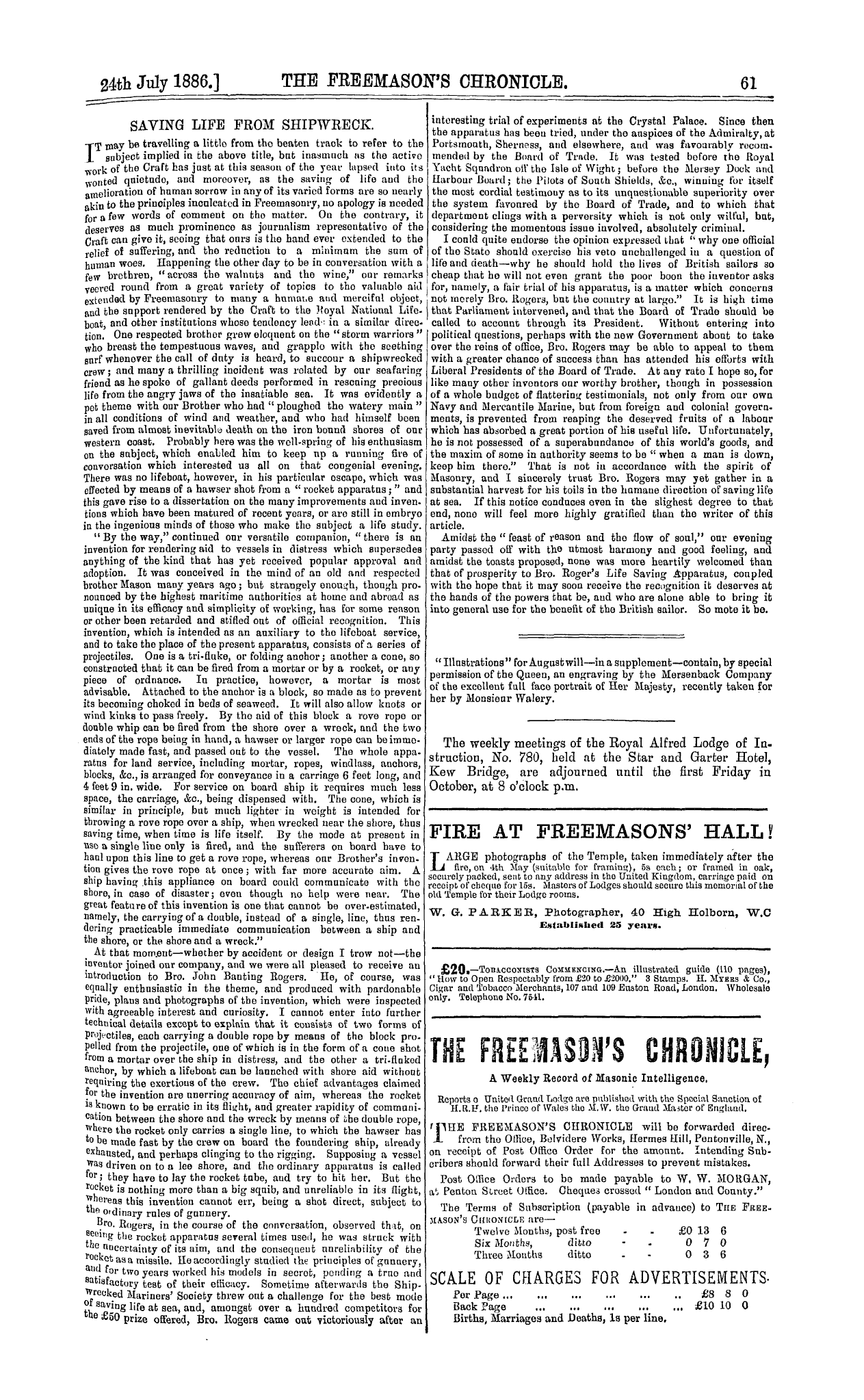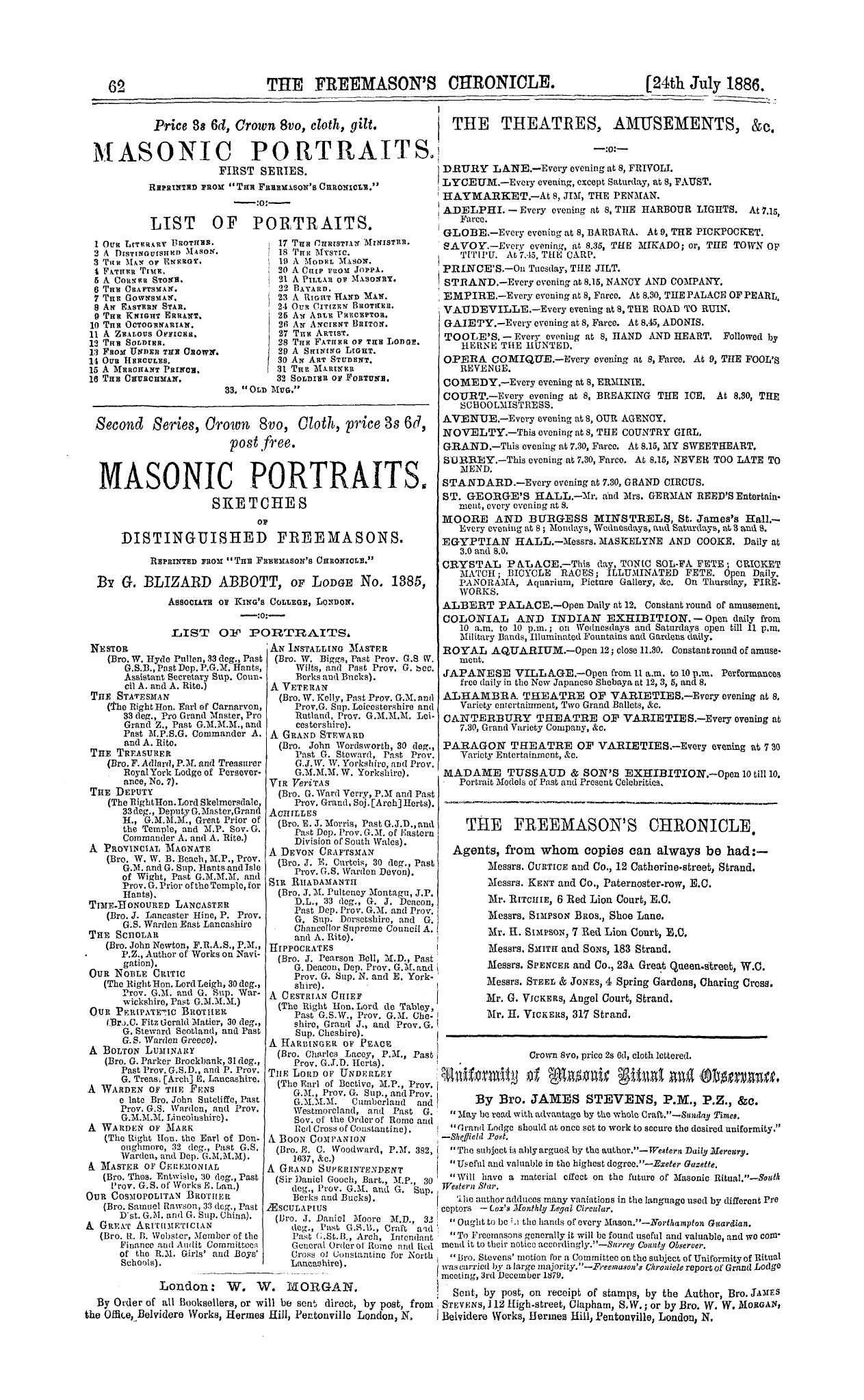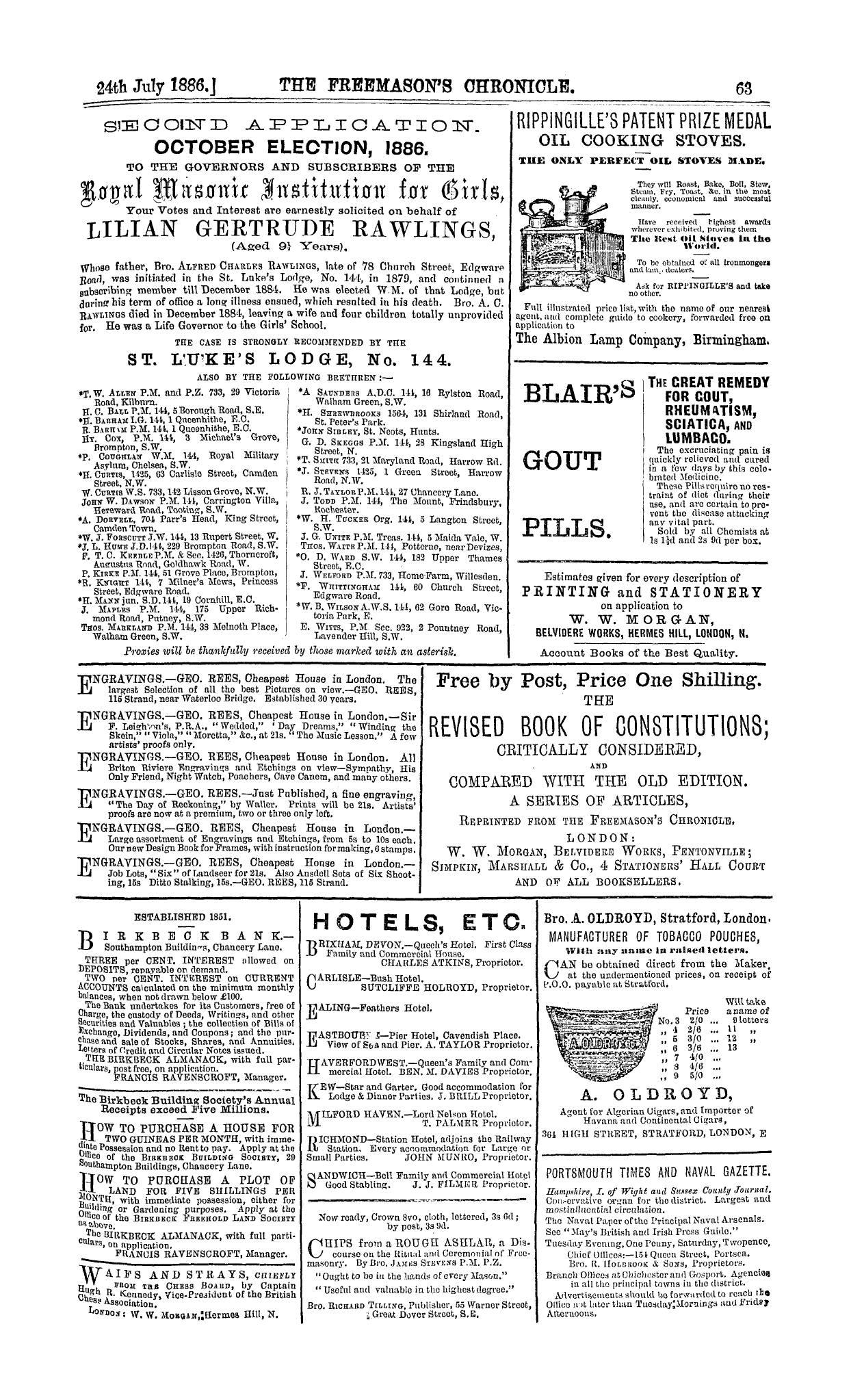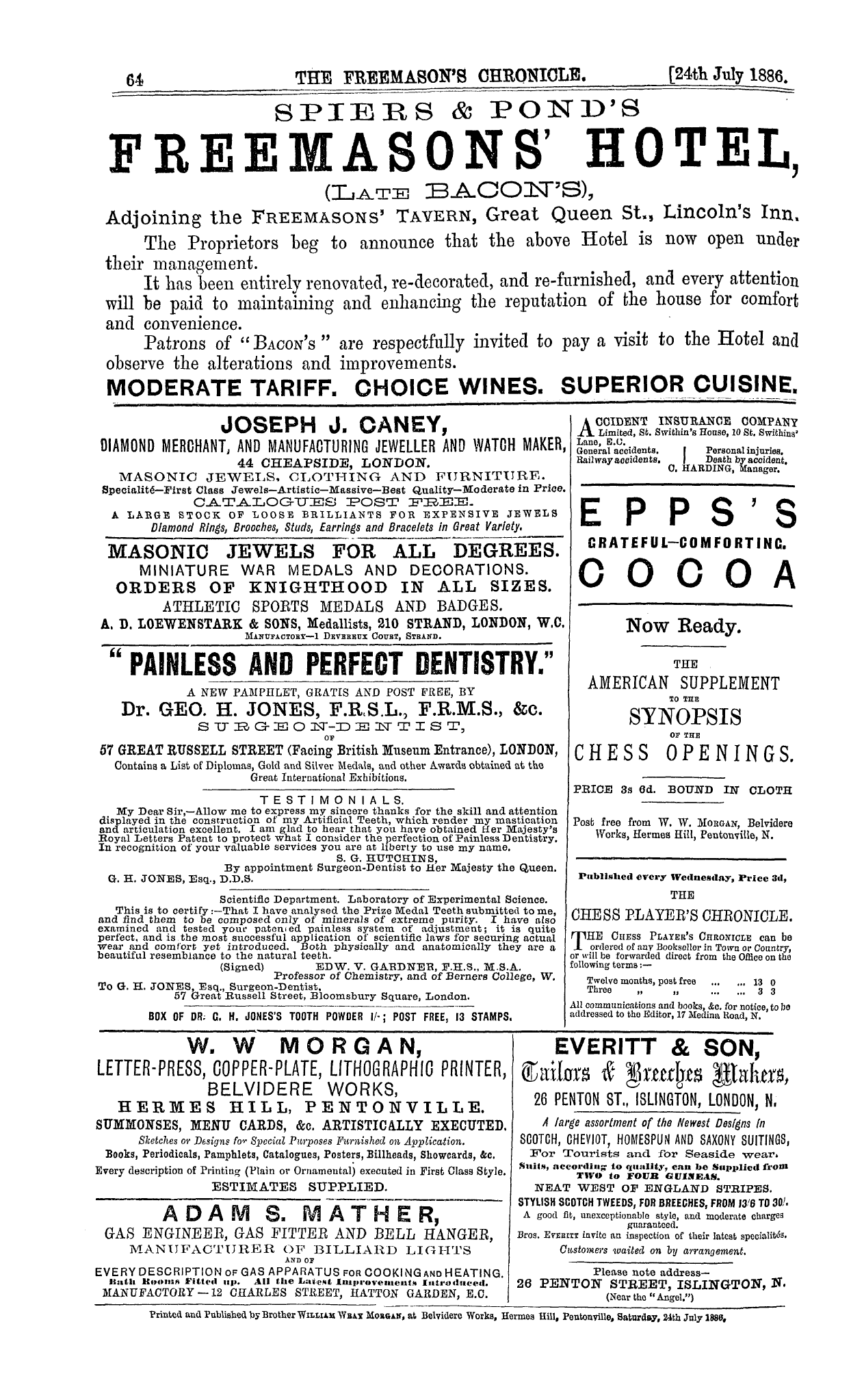-
Articles/Ads
Article AN IDEAL KNIGHT. ← Page 2 of 3 Article AN IDEAL KNIGHT. Page 2 of 3 →
Note: This text has been automatically extracted via Optical Character Recognition (OCR) software.
An Ideal Knight.
diagnosing diseases of the eye and brain , both to the physician and surgeon . In 1863 our " Knight" published a work of somewhat higher pretensions , "A manual of Ophthalmic Surgery , a practical treatise on the use of the
Ophthalmoscope in diseases of the Eye . " This work received numerous very flattering notices , a fair example of the press comments being that of the Quarterly Journal
of Science , the editor of which wrote , " From the author ' s previous writings on the microscope , and his familiarity with the laws of optics , he was quite well qualified to
appreciate the importance of the Ophthalmoscope . As he was one of the first to direct the attention of the medical profession to the subject , so he has been one of the most diligent students in this country in its application . " Dr .
j orbea Winslow , m hia work " Un obscure diseases ot the Brain , & c , " refers to the book , while the Lancet , in reviewing its third edition , remarked that its author had added to its utility by incorporating the latest views on those deep-seated changes of the tissues of the eye which the
Ophthalmoscope reveals , and of which it every day tends more and more to disclose the nature and the cause . The Medical Times and Gazette said the third edition was a decided improvement on the preceding , and that an
inquirer need not go further for rules to teach him how to use the Ophthalmoscope . The British Medical Jmtrnal concluded its notice by saying that the book ought to be in the possession of every surgeon who is interested in the treatment of diseases of the eye . Other works by our
Ideal Knight are well known in the profession of which he is so bright an ornament , they comprise " A Parasitic or Germ Theory of Disease" ( 1873 ) , "Impairment of Vision from Spinal Concussion or Shock" ( 1876 ) , and
" The Unre of Cataract and other Eye Affections " ( 1880 ) , while several minor works preceded these , among which we find " A Manual of Domestic Medicine " ( 1858 ) , and " A Manual of Photography " ( 1845 ) . He has likewise contributed numerous valuable papers to the Transactions of
the societies with which he has been connected—the •M ~ A ; n « i SnmWy Q f London , the Linnam Society , the . Koyal Microscopical Society , the Pathological Society , & c , —while the medical journals bear ample
evidence of hia diligence and desire to promote and improve tbe art of healing . The Lancet , British Medical Journal , Medical Times and Gazette , and Medical Press ancl Circular , all contain his writings , while to the latter journal
he has for many years been a regular contributor . In 1868 our " Ideal Knight" was induced to become a contributor
to tbe Examiner newspaper , then a journal of considerable importance , both politically and socially . To its pages he constantly contributed articles on social and health topics ,
together with reviews of books . In short , he made literature a meansfor bringing prominently before the public the evils of the poor laws , lunatic asylums , and the maladministration and abuse of hospitals . He gave evidence in a somewhat
notorious inquiry of the day—the alleged overcrowding of the St . Pancras Infirmary , —and he contended that much of the abuse heaped on Workhouse Infirmaries was ill deserved and did not really exist j a letter on this subject , published in the Examiner , November 1869 , was reprinted and freely distributed at the cost of the St . Pancras ratepayers . He has continued the discussion of questions of public health in the daily papers from that time to this , while a number of letters from his pen have found a place in the Morning Post , Globe , & c , on the neglected educational condition of the blind and tbe deaf mute . He contends that by paying attention to their education the
greater portion of these afflicted people would become bread winners , and not remain a "burden on their friends and the public . In the spare moments our " Ideal Knight " has been able to snatch from the duties of an arduous professional
life he has devoted himself to the philanthropic movements of the day , one of the earliest Societies which he was chiefly instrumental in founding being the "Milton Society , " for improving the social condition of the blind . At another time we find him engaged with Mr . Torrens , who represented Finsbury in Parliament for twenty years , in an effort to improve the dwellings of the poor . The late Earl of Shaftesbury was the President of this , the " Evicted Tenants' Aid Society , " by the early and earnest efforts of ¦ which the great changes and improvements which have taken place towards bettering the dwellings and surroundings of the poor of London have been brought about . Another Society , the good work of which is not so well known as it should be , waa that for " securing a better
An Ideal Knight.
system of Recruiting for the Army . " The object of this Society was the discouragement of enlisting mere boys into the army at a time when lads of seventeen or eighteen years of age—growing youths , whose bones were not
consolidated—were taken , very many of whom broke down as recruits , and in consequence were invalided before they could be made into soldiers . In connection with those works of Charity more immediately connected with the
profession of medicine , we may mention that our " Knight •' was a staunch supporter from the very first of the work of the Medical Benevolent College , while he was foremost among those who set on foot the Hospital Sunday Fund .
It is not generally known perhaps that the inception of this movement was met with a very considerable amount of opposition in quarters where it was least expected , but such was the case . The Bishop of London ( Dr . Jackson )
for instance , strongly opposed it , because it seemed likel y to interfere with the success of the Bishop of London ' s Fund , but as the earnest promoters of the scheme had alread y
succeeded in securing the co-operation of the then Lord Mayor of London ( Sir Sidney Waterlow ) the Bishop was , after much persuasion , induced to give way , and the first
Hospital Sunday was fixed for the 15 th June 1873 . For
several years the subject of this sketch continued an active member of the Council of this Fund , while at the present time he takes every opportunity of advancing its usefulness . It is well known too that our brother has taken a warm
interest in the question of obtaining a better and purer water supply for London , and it was a letter of his , which appeared in the Times of the 5 th April 1880 , that struck
the keynote of all the subsequent opposition to , tbe scheme of Mr . Smith , for buying up the vaiious water companies at their own valuation , which forced the Home Secretary to abandon the Bill he introduced for the purpose .
In 1865 , after the news of the terrible explosion which occurred in a well-known fiery mine at Merthyr Tydvil , when nearly a hundred lives were sacrificed , our brother read a paper on the subject at the Society of Arts , and he
then proposed , and introduced a scientific instrument for the deteuliuu of fire-damp in mines , by means of which the exact per centage of this deleterious gas is readily determinable . This invention , although acknowledged to be
extremely valuable , has never been brought into use , possibly because it involves the necessity of a small galvanic battery to put it in motion , and to give a telegraphic signal at the surface of the mine . Thus it is brought about that ,
either from gross ignorance or a determination to secure the economical working of their mines , owners as a rule are , or seem to be , regardless of the lives of their workmen .
No invention , in fact , that involves an outlay of money or gives extra trouble seems to have a chance of being adopted in mining enterprise .
Coming now to the subject with which we are more intimately associated—Freemasonry—we find that our brother was admitted as an initiate in the year 1855 , being
first drawn towards the Order , we believe , by its noble Charitable Institutions , the principles of which , and the unbounded benevolence of the Craft generally might easily arouse the attention of one far less earnest in the cause than
was our " Ideal Knight . " It must indeed be accounted a noble work , that of promoting peace and goodwill on earth towards man , as also must the great efforts of Charity , by all who desire the happiness of the greatest
number of their fellow-creatures , and accordingly we are not surprised to find that after entering the Order our brother placed his professional services at the command of the Royal Masonic Institutions . From that time until the
present he has been consulting Ophthalmic Surgeon to the Educational Institutions , and whenever his services have been called into requisition they have been cheerfully and readily given . Our " Ideal Knight" was initiated , as we have
said , m 1855 , receiving the light of Masonry in the Old Concord Lodge , No . 172 . In 1862 he was elected to the chair of his mother Lodge , and five years later was selected by the then Grand Master — the late Earl of
Zetland—for the office of Grand Deacon of England , an office which was honoured by his acceptance of it . In the year 1869 he , together with many other brethren , founded the John Hervey Lodge , No . 1260 ,
he filling the Master ' s chair thereof in 1875 , and afterwards being elected to the position of Treasurer of the Lodge . In 1876 he became M . E . Z . of the John Hervey Chapter , wherein also he has since filled the office of Treasurer . In 1884 he assisted at the foundation of the Lodge of King Solomon , No . 2029 , and was subsequently
Note: This text has been automatically extracted via Optical Character Recognition (OCR) software.
An Ideal Knight.
diagnosing diseases of the eye and brain , both to the physician and surgeon . In 1863 our " Knight" published a work of somewhat higher pretensions , "A manual of Ophthalmic Surgery , a practical treatise on the use of the
Ophthalmoscope in diseases of the Eye . " This work received numerous very flattering notices , a fair example of the press comments being that of the Quarterly Journal
of Science , the editor of which wrote , " From the author ' s previous writings on the microscope , and his familiarity with the laws of optics , he was quite well qualified to
appreciate the importance of the Ophthalmoscope . As he was one of the first to direct the attention of the medical profession to the subject , so he has been one of the most diligent students in this country in its application . " Dr .
j orbea Winslow , m hia work " Un obscure diseases ot the Brain , & c , " refers to the book , while the Lancet , in reviewing its third edition , remarked that its author had added to its utility by incorporating the latest views on those deep-seated changes of the tissues of the eye which the
Ophthalmoscope reveals , and of which it every day tends more and more to disclose the nature and the cause . The Medical Times and Gazette said the third edition was a decided improvement on the preceding , and that an
inquirer need not go further for rules to teach him how to use the Ophthalmoscope . The British Medical Jmtrnal concluded its notice by saying that the book ought to be in the possession of every surgeon who is interested in the treatment of diseases of the eye . Other works by our
Ideal Knight are well known in the profession of which he is so bright an ornament , they comprise " A Parasitic or Germ Theory of Disease" ( 1873 ) , "Impairment of Vision from Spinal Concussion or Shock" ( 1876 ) , and
" The Unre of Cataract and other Eye Affections " ( 1880 ) , while several minor works preceded these , among which we find " A Manual of Domestic Medicine " ( 1858 ) , and " A Manual of Photography " ( 1845 ) . He has likewise contributed numerous valuable papers to the Transactions of
the societies with which he has been connected—the •M ~ A ; n « i SnmWy Q f London , the Linnam Society , the . Koyal Microscopical Society , the Pathological Society , & c , —while the medical journals bear ample
evidence of hia diligence and desire to promote and improve tbe art of healing . The Lancet , British Medical Journal , Medical Times and Gazette , and Medical Press ancl Circular , all contain his writings , while to the latter journal
he has for many years been a regular contributor . In 1868 our " Ideal Knight" was induced to become a contributor
to tbe Examiner newspaper , then a journal of considerable importance , both politically and socially . To its pages he constantly contributed articles on social and health topics ,
together with reviews of books . In short , he made literature a meansfor bringing prominently before the public the evils of the poor laws , lunatic asylums , and the maladministration and abuse of hospitals . He gave evidence in a somewhat
notorious inquiry of the day—the alleged overcrowding of the St . Pancras Infirmary , —and he contended that much of the abuse heaped on Workhouse Infirmaries was ill deserved and did not really exist j a letter on this subject , published in the Examiner , November 1869 , was reprinted and freely distributed at the cost of the St . Pancras ratepayers . He has continued the discussion of questions of public health in the daily papers from that time to this , while a number of letters from his pen have found a place in the Morning Post , Globe , & c , on the neglected educational condition of the blind and tbe deaf mute . He contends that by paying attention to their education the
greater portion of these afflicted people would become bread winners , and not remain a "burden on their friends and the public . In the spare moments our " Ideal Knight " has been able to snatch from the duties of an arduous professional
life he has devoted himself to the philanthropic movements of the day , one of the earliest Societies which he was chiefly instrumental in founding being the "Milton Society , " for improving the social condition of the blind . At another time we find him engaged with Mr . Torrens , who represented Finsbury in Parliament for twenty years , in an effort to improve the dwellings of the poor . The late Earl of Shaftesbury was the President of this , the " Evicted Tenants' Aid Society , " by the early and earnest efforts of ¦ which the great changes and improvements which have taken place towards bettering the dwellings and surroundings of the poor of London have been brought about . Another Society , the good work of which is not so well known as it should be , waa that for " securing a better
An Ideal Knight.
system of Recruiting for the Army . " The object of this Society was the discouragement of enlisting mere boys into the army at a time when lads of seventeen or eighteen years of age—growing youths , whose bones were not
consolidated—were taken , very many of whom broke down as recruits , and in consequence were invalided before they could be made into soldiers . In connection with those works of Charity more immediately connected with the
profession of medicine , we may mention that our " Knight •' was a staunch supporter from the very first of the work of the Medical Benevolent College , while he was foremost among those who set on foot the Hospital Sunday Fund .
It is not generally known perhaps that the inception of this movement was met with a very considerable amount of opposition in quarters where it was least expected , but such was the case . The Bishop of London ( Dr . Jackson )
for instance , strongly opposed it , because it seemed likel y to interfere with the success of the Bishop of London ' s Fund , but as the earnest promoters of the scheme had alread y
succeeded in securing the co-operation of the then Lord Mayor of London ( Sir Sidney Waterlow ) the Bishop was , after much persuasion , induced to give way , and the first
Hospital Sunday was fixed for the 15 th June 1873 . For
several years the subject of this sketch continued an active member of the Council of this Fund , while at the present time he takes every opportunity of advancing its usefulness . It is well known too that our brother has taken a warm
interest in the question of obtaining a better and purer water supply for London , and it was a letter of his , which appeared in the Times of the 5 th April 1880 , that struck
the keynote of all the subsequent opposition to , tbe scheme of Mr . Smith , for buying up the vaiious water companies at their own valuation , which forced the Home Secretary to abandon the Bill he introduced for the purpose .
In 1865 , after the news of the terrible explosion which occurred in a well-known fiery mine at Merthyr Tydvil , when nearly a hundred lives were sacrificed , our brother read a paper on the subject at the Society of Arts , and he
then proposed , and introduced a scientific instrument for the deteuliuu of fire-damp in mines , by means of which the exact per centage of this deleterious gas is readily determinable . This invention , although acknowledged to be
extremely valuable , has never been brought into use , possibly because it involves the necessity of a small galvanic battery to put it in motion , and to give a telegraphic signal at the surface of the mine . Thus it is brought about that ,
either from gross ignorance or a determination to secure the economical working of their mines , owners as a rule are , or seem to be , regardless of the lives of their workmen .
No invention , in fact , that involves an outlay of money or gives extra trouble seems to have a chance of being adopted in mining enterprise .
Coming now to the subject with which we are more intimately associated—Freemasonry—we find that our brother was admitted as an initiate in the year 1855 , being
first drawn towards the Order , we believe , by its noble Charitable Institutions , the principles of which , and the unbounded benevolence of the Craft generally might easily arouse the attention of one far less earnest in the cause than
was our " Ideal Knight . " It must indeed be accounted a noble work , that of promoting peace and goodwill on earth towards man , as also must the great efforts of Charity , by all who desire the happiness of the greatest
number of their fellow-creatures , and accordingly we are not surprised to find that after entering the Order our brother placed his professional services at the command of the Royal Masonic Institutions . From that time until the
present he has been consulting Ophthalmic Surgeon to the Educational Institutions , and whenever his services have been called into requisition they have been cheerfully and readily given . Our " Ideal Knight" was initiated , as we have
said , m 1855 , receiving the light of Masonry in the Old Concord Lodge , No . 172 . In 1862 he was elected to the chair of his mother Lodge , and five years later was selected by the then Grand Master — the late Earl of
Zetland—for the office of Grand Deacon of England , an office which was honoured by his acceptance of it . In the year 1869 he , together with many other brethren , founded the John Hervey Lodge , No . 1260 ,
he filling the Master ' s chair thereof in 1875 , and afterwards being elected to the position of Treasurer of the Lodge . In 1876 he became M . E . Z . of the John Hervey Chapter , wherein also he has since filled the office of Treasurer . In 1884 he assisted at the foundation of the Lodge of King Solomon , No . 2029 , and was subsequently

